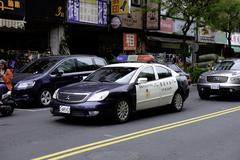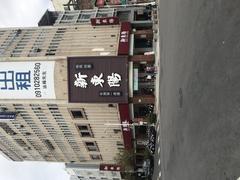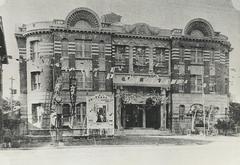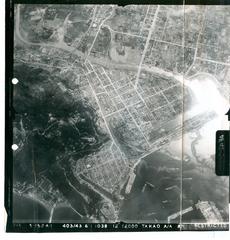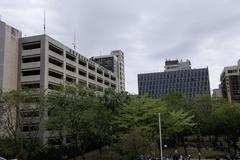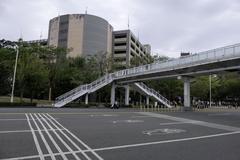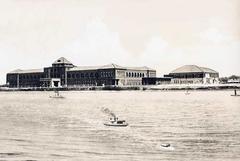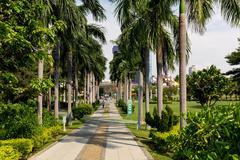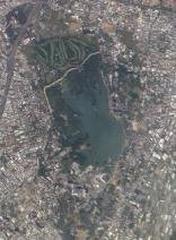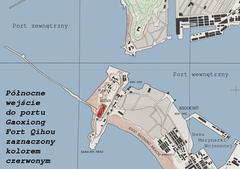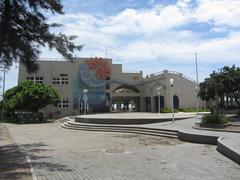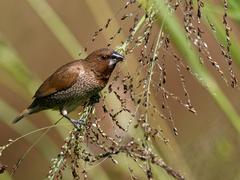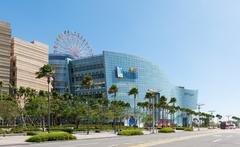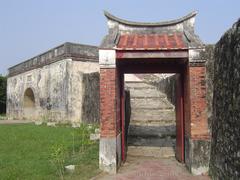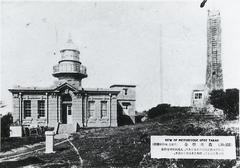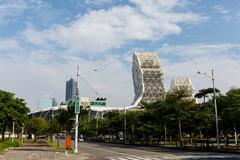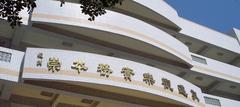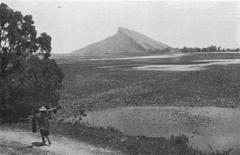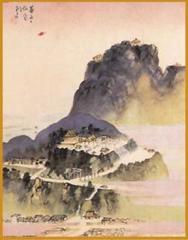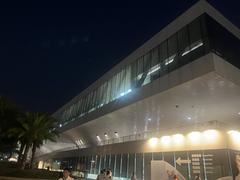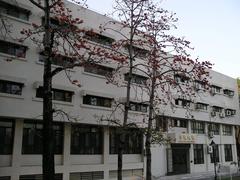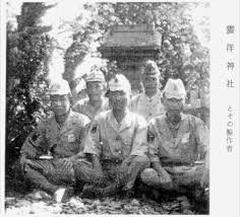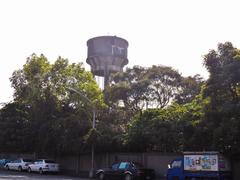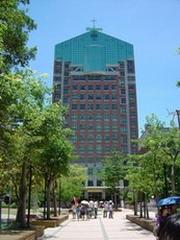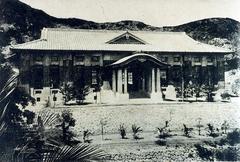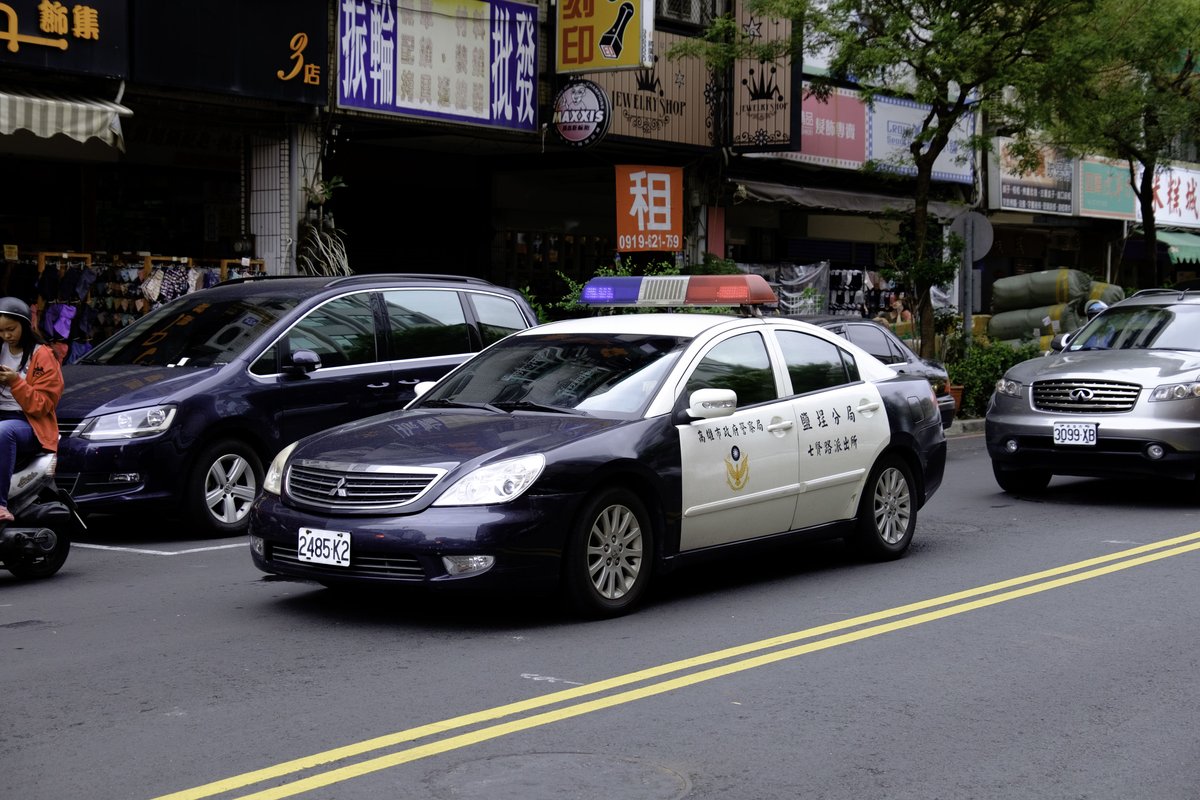
Love River Promenade in Kaohsiung: Visitor Information and Tips
Date: 17/07/2024
Introduction
The Love River Promenade, locally known as ‘Ai He’ (愛河), stands as one of Kaohsiung’s most cherished landmarks. This scenic waterfront symbolizes the city’s dramatic transformation from an industrial hub to a vibrant urban space that harmonizes history, culture, and natural beauty. The river, originally called ‘Takao River,’ has been pivotal in Kaohsiung’s development, serving as a crucial waterway for trade and transportation during the early 20th century and the Japanese colonial period (Taiwan Tourism Bureau). However, rapid industrialization post-World War II led to severe pollution, earning the river the notorious nickname ‘Black Dragon River’ due to its heavily contaminated waters. The late 1990s marked a turning point when the Kaohsiung City Government initiated extensive revitalization efforts, transforming the Love River into a symbol of environmental rejuvenation and urban renewal (Taiwan Today). Today, the Love River Promenade is not only a testament to successful environmental restoration but also a cultural hub hosting various events and festivals, drawing thousands of visitors annually.
Table of Contents
- Introduction
- History of Love River Promenade, Kaohsiung, Taiwan
- Cultural and Social Impact
- Modern-Day Significance
- Visitor Information
- Travel Tips
- Special Events
- Frequently Asked Questions (FAQ)
- Conclusion
History of Love River Promenade, Kaohsiung, Taiwan
Early Development and Historical Significance
The Love River, known locally as “Ai He” (愛河), has a rich history that dates back to the early 20th century. Originally called “Takao River,” it was an essential waterway for the indigenous Makatao people and later for the Han Chinese settlers. The river’s strategic location made it a vital artery for trade and transportation, contributing significantly to the economic development of Kaohsiung.
During the Japanese colonial period (1895-1945), the river underwent significant modifications. The Japanese administration implemented extensive urban planning and infrastructure projects, including the dredging and widening of the river to facilitate better navigation and flood control. This period marked the beginning of the river’s transformation from a natural waterway to a more structured urban feature.
Post-War Industrialization and Decline
Following World War II, Kaohsiung experienced rapid industrialization, becoming one of Taiwan’s major industrial hubs. The Love River, unfortunately, bore the brunt of this development. Factories and residential areas along the riverbanks discharged untreated wastewater directly into the river, leading to severe pollution. By the 1970s, the Love River had become notorious for its foul smell and heavily polluted waters, earning it the nickname “Black Dragon River.”
Revitalization Efforts
The turning point for the Love River came in the late 1990s when the Kaohsiung City Government initiated a comprehensive river revitalization project. The project aimed to restore the river’s ecological health and transform it into a scenic urban landmark. Key measures included the construction of sewage treatment plants, the installation of interceptor sewers to prevent direct discharge of wastewater, and the dredging of polluted sediments.
One of the most significant milestones in the river’s revitalization was the completion of the Love River Water Quality Improvement Project in 2002. This project, funded by both the central and local governments, significantly improved the water quality, making the river safe for recreational activities. The success of these efforts was evident when the Love River was declared clean and suitable for boating and other water-based activities in 2003.
Cultural and Social Impact
The revitalization of the Love River has had a profound impact on the cultural and social fabric of Kaohsiung. The riverbanks have been transformed into the Love River Promenade, a popular destination for both locals and tourists. The promenade features beautifully landscaped parks, walking and cycling paths, and numerous cafes and restaurants, making it a vibrant social hub.
The Love River has also become a symbol of Kaohsiung’s environmental and urban renewal. It hosts various cultural events and festivals, such as the annual Love River Lantern Festival, which attracts thousands of visitors. The river’s transformation has been widely recognized as a model for urban river restoration, inspiring similar projects in other cities.
Modern-Day Significance
Today, the Love River Promenade is not just a testament to successful environmental restoration but also a key element of Kaohsiung’s urban identity. The river continues to play a crucial role in the city’s tourism industry, drawing visitors with its scenic beauty and recreational opportunities. The Love River Boat Tour, for instance, offers a unique perspective of the city, allowing tourists to enjoy the picturesque views of the riverbanks and the city skyline.
Visitor Information
- Visiting Hours: The Love River Promenade is open 24/7. However, specific attractions like boat tours may have distinct operating hours. It’s recommended to check the official website for the latest updates.
- Tickets: Access to the promenade is free. However, certain activities like the Love River Boat Tour may require tickets, which can be purchased on-site or online.
- Nearby Attractions: Explore other nearby attractions such as the Kaohsiung Museum of History, Pier-2 Art Center, and the Kaohsiung Harbor.
- Accessibility: The promenade is wheelchair accessible, with ramps and pathways designed for easy navigation.
Travel Tips
- Best Time to Visit: The best time to visit is during the evening when the promenade is beautifully illuminated. The cooler temperatures also make for a more comfortable stroll.
- Photography Spots: Capture stunning photos at the Love River Bridge and along the beautifully lit pathways.
- Dining: Enjoy local delicacies at the numerous cafes and restaurants along the promenade.
Special Events
- Love River Lantern Festival: Held annually, this festival features magnificent lantern displays and cultural performances, attracting thousands of visitors each year.
- Guided Tours: Consider joining a guided tour to gain deeper insights into the history and significance of the Love River.
Frequently Asked Questions (FAQ)
- Q: What are the visiting hours for the Love River Promenade?
- A: The promenade is open 24/7, but specific attractions like boat tours may have different operating hours.
- Q: Are there any entrance fees for the Love River Promenade?
- A: Access to the promenade is free, but certain activities like boat tours may require tickets.
- Q: What is the best time to visit the Love River Promenade?
- A: The best time to visit is during the evening when the promenade is beautifully illuminated.
Conclusion
The Love River Promenade is a testament to Kaohsiung’s resilience and commitment to sustainable urban living. From its rich historical roots to its modern-day significance, the Love River offers a unique blend of cultural, historical, and recreational experiences. For more detailed information on the Love River’s history and its impact on Kaohsiung, you can visit the Kaohsiung City Government’s official website.
Stay updated with the latest news and events by following us on social media and checking out our other related posts.
References
- Taiwan Tourism Bureau. (n.d.). https://eng.taiwan.net.tw/
- Taiwan Today. (n.d.). https://www.taiwantoday.tw/news.php?unit=10,23,45,10&post=20045
- Kaohsiung City Government. (n.d.). https://www.kcg.gov.tw/
